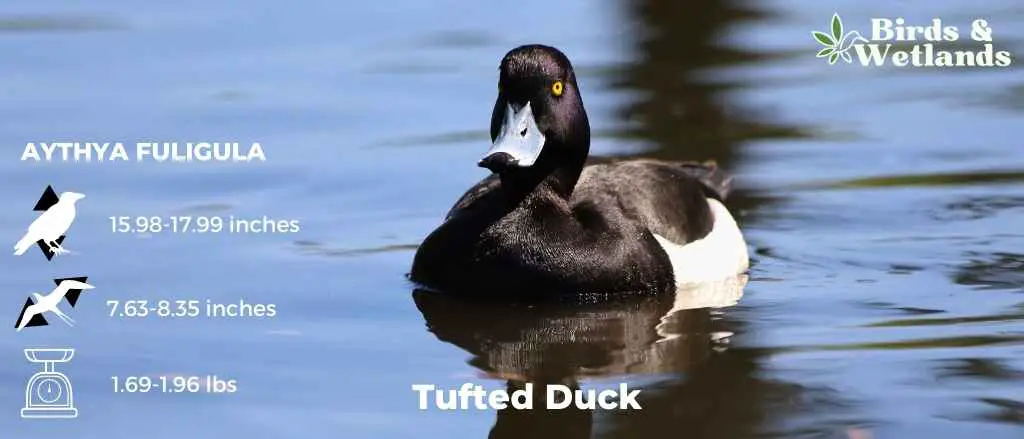The tufted duck, also known as the tufted pochard, is a small diving duck found throughout Eurasia’s temperate and northern regions. It is a winter visitor in North America. It is Europe’s counterpart to North America’s ring-necked duck.
The tufted duck got its name from the obvious head tuft or thin crest on the back of its head.
Tufted ducks are generally found near bodies of water, such as lakes, sheltered ponds, and rivers, where they feed on plants, insects, and small fish. They are social birds and can often be seen with other diving ducks in large flocks.
Scientific Name: Aythya fuligula
Height
- Male: 40.6-45.7 cm
- Female: 40.6-45.7 cm
Wingspan
- Male: 20.2-21.2 cm
- Female: 19.4-20.7 cm
Weight
- Male: 889.6 g
- Female: 768.3 g
Tufted Duck Description
The adult male tufted duck is an elegant bird with a stunningly vivid color palette. Its crown and upper back are black and has white flanks. Its long tuft gives it a unique appearance.
It also has a blue-grey bill, while its large gold-yellow eyes illuminate its face.
The adult female tufted duck has a striking appearance, with its dark brown feathers covering most of its body and paler flanks. It also possesses a distinguishing feature – a white band at the base of the bill, which is quite prominent. This bird is slightly smaller than the male and has a shorter head crest.
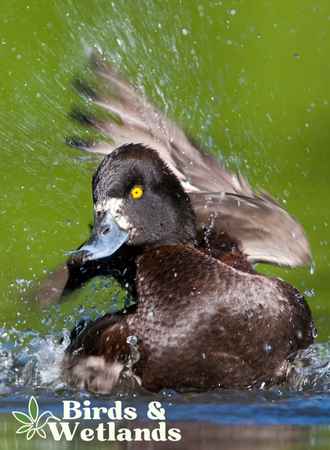
Listen to Tufted Duck
Tufted Duck Habitat & Range
The tufted duck is highly migratory, breeding throughout temperate and northern Eurasia. Its range extends from Finland and Scandinavia in the north, down to France in the west, and eastwards to Japan.
Interestingly, breeding populations of tufted ducks occur in western Alaska.
It breeds mainly on shallow lakes, marshes and flooded meadows, nesting close to the water’s edge.
During winter, Eurasian tufted ducks migrate to milder south Europe, northern Africa, the Middle East and East and Southern Asia. Tufted ducks are seen all year round in some parts of western Europe. Some tufted ducks have been spotted wintering along the Atlantic coast of the United States and Canada.
Their wintering grounds include coastal bays, city parks, estuaries or sheltered inshore areas with available food sources such as aquatic vegetation.
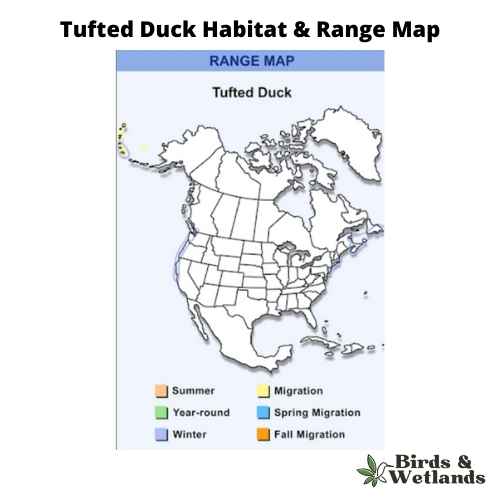
Tufted Duck Diet & Food Habits
The tufted duck has a varied diet of plant matter, mollusks, crustaceans, crayfish, snails, aquatic insects and sometimes small fish or amphibians. It typically feeds by diving to the bottom of its habitat to access the roots of aquatic plants.
Depending on the availability of food in their range and the season, tufted ducks can adjust their diets accordingly. They usually search for food closer to their habitats during the day but relocate away from their territories when seeking food at night.

Tufted Duck Nesting & Mating Habits
The Tufted Duck breeds in single pairs or loose groups. The breeding season starts in May and continues into late summer.
During this time, the female builds the nest on the ground, constructing a bowl-shaped structure lined with down and vegetation, typically made up of grasses and sedges.
She lays 8-10 olive-grey or pale brown eggs, which she will incubate alone for 26-28 days. During the incubation period, the male often leaves the female to molt.
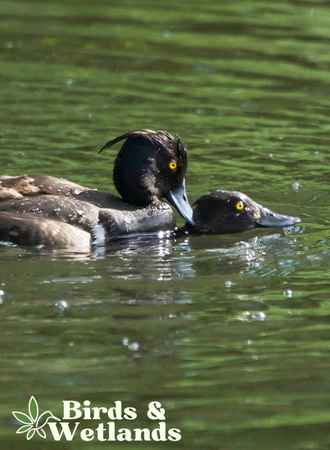
Tufted Duck Population & Conservation Status
The conservation status of this bird species in Europe has been steadily declining due to habitat loss, climate change, hunting pressure and predation. In particular, wetland habitats are being lost or degraded due to intensive land use development and urbanization.
As a result of these pressures, IUCN Red List currently classifies the tufted duck population in Europe as Near Threatened – meaning that it is likely to become endangered unless effective conservation efforts are implemented soon.
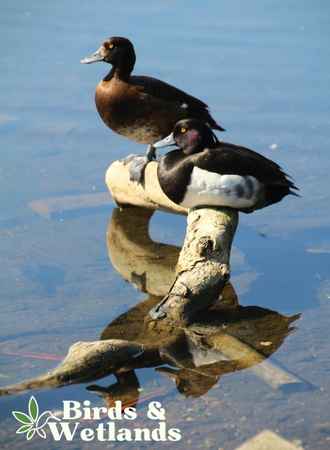
Key Points
- Tufted ducks are easily confused with the greater scaup, lesser scaups and ring-necked ducks.
- As diving ducks, these water birds feed primarily by diving underwater.
- Like most ducks, tufted ducks form large flocks during migration.

